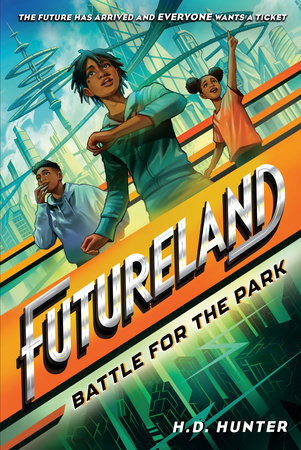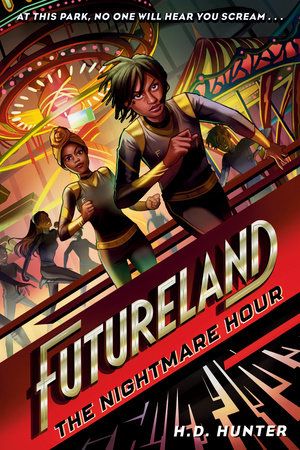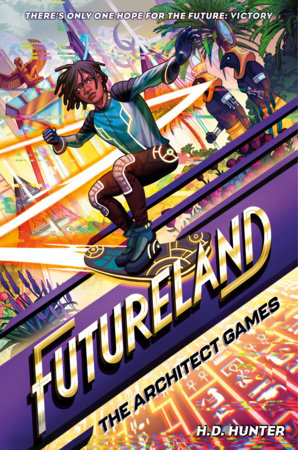Let’s talk gratitude!
Fall is the time of year we tend to consider the concept. I recently read Michael J Fox’s memoir No Time Like the Future. His theme: “With gratitude, optimism is sustainable” drove home the realization that gratitude isn’t just a feeling we should have (peaking sometime around Thanksgiving), it’s a practice we must have. If we want to have a forward-looking life in the midst of all the uncertainty and the curveballs life will throw at us…
We need to cultivate the practice of gratitude all year long.
For our young people growing up in this fast-changing world bombarded by sensationalist media developing gratitude is particularly important. Fortunately, developing gratitude (and empathy and kindness and hopefulness and so on) is an area where middle grade literature really rocks! A feeling of gratitude was certainly on my mind while writing my middle-grade novel, Wand. And in general the genre is rich with books to help young people develop this life-sustaining practice, without being preachy or moralistic.
Jenn Brisendine created a gorgeous post a few years back about reflection and gratitude this time of year, and about learning to appreciate what’s right in front of us. Building on that…
Here are 10 middle grade books to inspire gratitude:
Ana María Reyes Does Not Live in a Castle by Hilda Eunice Burgos

The Penderwicks meets In the Heights in this sparkling middle-grade debut about a young Dominican American girl in New York City.
Her last name may mean “kings,” but Ana María Reyes REALLY does not live in a castle. Rather, she’s stuck in a tiny apartment with two parents (way too lovey-dovey), three sisters (way too dramatic), everyone’s friends (way too often), and a piano (which she never gets to practice). And when her parents announce a new baby is coming, that means they’ll have even less time for Ana María.
Then she hears about the Eleanor School, New York City’s best private academy. If Ana María can win a scholarship, she’ll be able to get out of her Washington Heights neighborhood school and achieve the education she’s longed for. To stand out, she’ll need to nail her piano piece at the upcoming city showcase, which means she has to practice through her sisters’ hijinks, the neighbors’ visits, a family trip to the Dominican Republic… right up until the baby’s birth! But some new friends and honest conversations help her figure out what truly matters, and know that she can succeed no matter what. Ana María Reyes may not be royal, but she’s certain to come out on top.
Elvis and The World As It Stands by Lisa Frenkel Riddiough
 A poignant middle-grade story about loss and finding family from the point of view of a newly adopted kitten.
A poignant middle-grade story about loss and finding family from the point of view of a newly adopted kitten.
Most shelter animals dream of going home with a forever family. But for Elvis, being chosen by Mrs. Pemberton is a nightmare. He’s been separated from his sister, Etta, and is determined to get back to the shelter to find her. In spite of himself, Elvis becomes curious about 10-year-old Georgina Pemberton, who builds LEGO skyscrapers in her bedroom while navigating her parents’ separation. The longer he’s in his new home, the more he starts recognizing new feelings: admiration for Georgina’s creations, affection for the other pets, and even empathy for the Pembertons–despite their inability to listen.
As Georgina sets out to build her most important skyscrapers yet–the Twin Towers–Elvis realizes that maybe both humans and animals can take a page from Georgina’s Big Book of American Architecture and “build a world of their own choosing,” even if the choices aren’t what they’d initially expected.
Harbor Me by Jacqueline Woodson

Jacqueline Woodson’s first middle-grade novel since National Book Award winner Brown Girl Dreaming celebrates the healing that can occur when a group of students share their stories.
It all starts when six kids have to meet for a weekly chat–by themselves, with no adults to listen in. There, in the room they soon dub the ARTT Room (short for “A Room to Talk”), they discover it’s safe to talk about what’s bothering them–everything from Esteban’s father’s deportation and Haley’s father’s incarceration to Amari’s fears of racial profiling and Ashton’s adjustment to his changing family fortunes. When the six are together, they can express the feelings and fears they have to hide from the rest of the world. And together, they can grow braver and more ready for the rest of their lives.
Homebound by John David Anderson

Leo Fender is no stranger to catastrophe, whether it’s the intergalactic war that took his mother’s life or the ongoing fight for his own. He’s seen his planet plundered, his ship attacked, his father kidnapped, and his brother go missing–and found himself stranded on a ship with a bunch of mercenary space pirates.
Still, nothing could have prepared him for the moment he and the crew tried to save his father…and discovered a dark plot that could destroy hundreds of worlds in the blink of an eye.
Now Leo is adrift. His father has sent him on a mission with nothing but a data chip and a name of someone who could help, and Captain Bastian Black and the crew of the Icarus are determined to see this through to the end with Leo, to fulfill his father’s wish and prevent further conflict.
But as Leo searches for answers, he can’t help but wonder what it would take to end the war, to track down his father and brother and return to whatever home they have left–and if the cost of doing so is one he would be able to pay.
Kat Greene Comes Clean by Melissa Roske

Life is messy.
Kat Greene lives in New York City and attends fifth grade at Village Humanity School, an ultra-progressive private school in New York’s Greenwich Village. At the moment she has three major problems: dealing with her boy-crazy best friend; partnering with the overzealous Sam in the class production of Harriet the Spy; and coping with her divorced mom’s preoccupation with cleanliness–a symptom of her worsening obsessive-compulsive disorder. Kat wants to tell her dad what’s going on, but he’s busy with her new family uptown.
With nowhere to turn, Kat reaches out to the free-spirited psychologist at her school, Olympia Rabinowitz, for support and guidance. Olympia encourages Kat to be honest. Eventually, Kat realizes that sometimes asking for help is the best way to clean up life’s messes.
Other Words for Home by Jasmine Warga

Jude never thought she’d be leaving her beloved older brother and father behind, all the way across the ocean in Syria. But when things in her hometown start becoming volatile, Jude and her mother are sent to live in Cincinnati with relatives.
At first, everything in America seems too fast and too loud. The American movies that Jude has always loved haven’t quite prepared her for starting school in the US–and her new label of “Middle Eastern,” an identity she’s never known before.
But this life also brings unexpected surprises–there are new friends, a whole new family, and a school musical that Jude might just try out for. Maybe America, too, is a place where Jude can be seen as she really is.
This lyrical, life-affirming story is about losing and finding home and, most importantly, finding yourself.
Simon Sort of Says by Erin Bow

Simon O’Keeffe’s biggest claim to fame should be the time his dad accidentally gave a squirrel a holy sacrament. Or maybe the alpaca disaster that went viral on YouTube. But the story the whole world wants to tell about Simon is the one he’d do anything to forget: the one starring Simon as a famous survivor of gun violence at school.
Two years after the infamous event, twelve-year-old Simon and his family move to the National Quiet Zone–the only place in America where the internet is banned. Instead of talking about Simon, the astronomers who flock to the area are busy listening for signs of life in space. And when Simon makes a friend who’s determined to give the scientists what they’re looking for, he’ll finally have the chance to spin a new story for the world to tell.
Simon Sort of Says, the Newbery Honor-winning novel by Erin Bow, is a breathtaking testament to the lasting echoes of trauma, the redemptive power of humor, and the courage it takes to move forward without forgetting the past.
Smack Dab in the Middle of Maybe by Jo Watson Hackl

11 days. 13 clues. And one kid who won’t give up.
How far would you go to find something that might not even exist?
All her life, Cricket’s mama has told her stories about a secret room painted by a mysterious artist. Now Mama’s run off, and Cricket thinks the room might be the answer to getting her to come back. If it exists. And if she can find it.
Cricket’s first clue is a coin from a grown-over ghost town in the woods. So with her daddy’s old guidebook and a coat full of snacks stolen from the Cash ‘n’ Carry, Cricket runs away to find the room. Surviving in the woods isn’t easy. While Cricket camps out in an old tree house and looks for clues, she meets the last resident of the ghost town, encounters a poetry-loving dog (who just might hold a key to part of the puzzle), and discovers that sometimes you have to get a little lost . . . to really find your way.
The Other Half of Happy by Rebecca Balcárcel

One-half Guatemalan, one-half American: When Quijana’s Guatemalan cousins move to town, her dad seems ashamed that she doesn’t know more about her family’s heritage.
One-half crush, one-half buddy: When Quijana meets Zuri and Jayden, she knows she’s found true friends. But she can’t help the growing feelings she has for Jayden.
One-half kid, one-half grown-up: Quijana spends her nights Skyping with her ailing grandma and trying to figure out what’s going on with her increasingly hard-to-reach brother.
Quijana must figure out which parts of herself are most important, and which pieces come together to make her whole.
This is a heartfelt poetic portrayal of a girl growing up, fitting in, and learning what it means to belong.
When Stars are Scattered by Victoria Jamieson

A National Book Award Finalist, this remarkable graphic novel is about growing up in a refugee camp, as told by a former Somali refugee to the Newbery Honor-winning creator of Roller Girl.
Omar and his younger brother, Hassan, have spent most of their lives in Dadaab, a refugee camp in Kenya. Life is hard there: never enough food, achingly dull, and without access to the medical care Omar knows his nonverbal brother needs. So when Omar has the opportunity to go to school, he knows it might be a chance to change their future . . . but it would also mean leaving his brother, the only family member he has left, every day.
Heartbreak, hope, and gentle humor exist together in this graphic novel about a childhood spent waiting, and a young man who is able to create a sense of family and home in the most difficult of settings. It’s an intimate, important, unforgettable look at the day-to-day life of a refugee, as told to New York Times Bestselling author/artist Victoria Jamieson by Omar Mohamed, the Somali man who lived the story.
Let me know in the comments which other middle-grade books have inspired gratitude in your students or kids!












